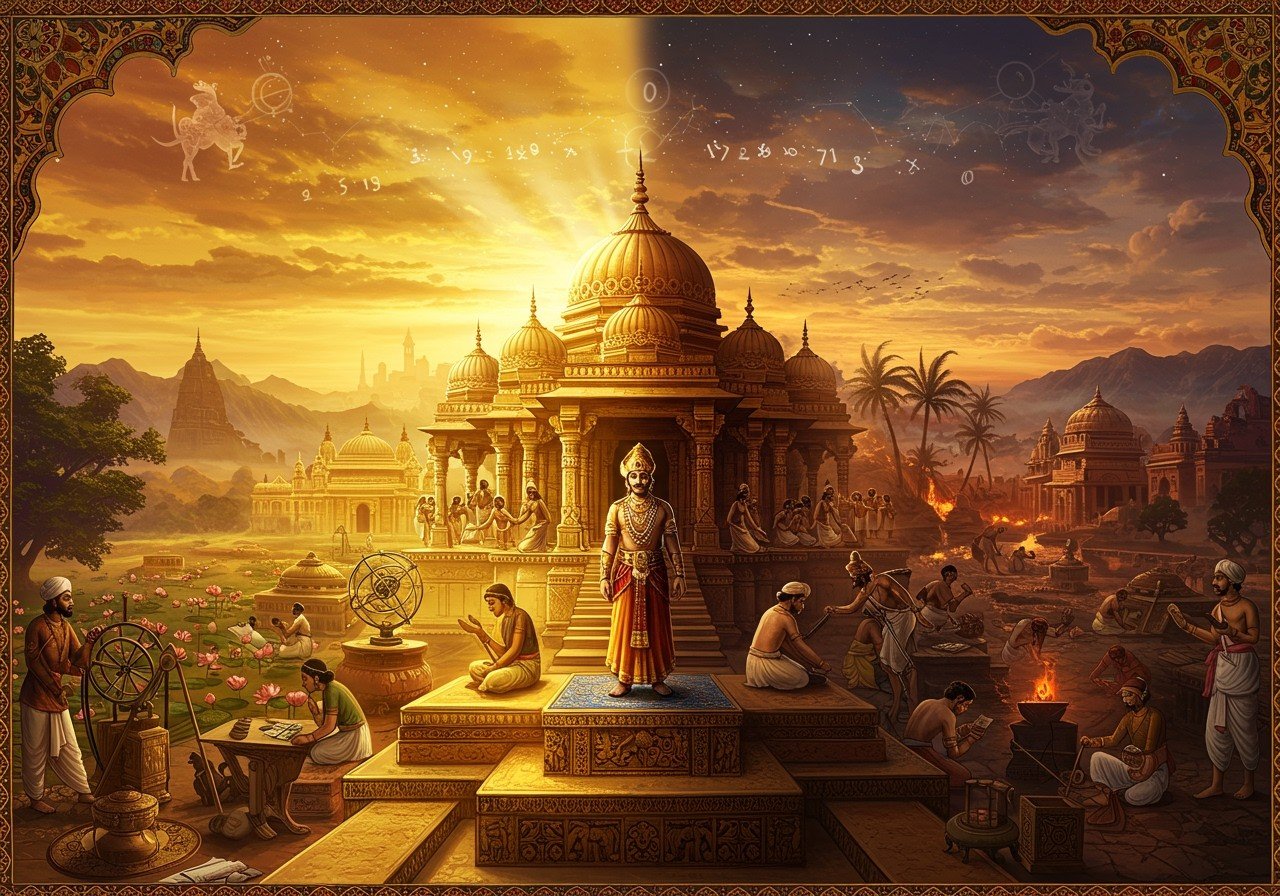
The Gupta Empire, often hailed as the Golden Age of India, represents a period of unparalleled cultural, scientific, and political achievements. Flourishing between the mid-3rd century to the mid-6th century CE, the Gupta dynasty, founded by Sri Gupta, presided over an era of significant advancements in various fields, solidifying India’s reputation as a center of progress and prosperity. This blog post delves into the numerous accomplishments of the Gupta Empire, exploring its advancements in art, architecture, science, literature, and trade, and examines the factors that ultimately led to its decline.
Origins and Expansion
The Gupta Empire’s foundation was laid by Sri Gupta around the mid-3rd century CE. His successor, Chandragupta I, significantly expanded the empire through strategic alliances and military conquests. The empire reached its zenith under Chandragupta II, also known as Vikramaditya. The Gupta rulers implemented a decentralized administrative system, allowing regional autonomy while maintaining a strong central authority. This governance model fostered economic growth and stability. The empire’s expansion facilitated trade and cultural exchange with other civilizations.
Cultural and Artistic Flourishing
The Gupta period is renowned for its remarkable contributions to art and culture. This era witnessed the construction of magnificent temples, such as those at Sanchi and Udayagiri, showcasing intricate architectural styles. The Ajanta Caves, with their exquisite murals and sculptures, exemplify Gupta artistry. Classical Sanskrit literature reached its peak during this time, with notable works like Kalidasa’s plays and poetry. The compilation of important texts like the Puranas preserved Hindu traditions and mythology. This rich artistic and literary output cemented the Gupta period’s status as a golden age.
Scientific and Technological Advancements
The Gupta era is celebrated for its groundbreaking achievements in science and technology. Aryabhata, a prominent mathematician and astronomer, made significant contributions, including the concept of zero and the approximation of π (pi). Advancements in medicine, led by scholars like Sushruta, author of the Sushruta Samhita, detailed surgical techniques and medical knowledge. Innovations in metallurgy, exemplified by the iron pillar of Delhi, showcased advanced metalworking skills. The development of the decimal system and advancements in astronomy, such as calculating solar and lunar eclipses, were pivotal.
Economic Prosperity and Trade
The Gupta Empire’s economic prosperity stemmed from its flourishing trade networks. Robust infrastructure, including well-maintained roads and waterways, facilitated internal trade. The empire engaged in extensive trade with regions like the Roman Empire, Southeast Asia, and China, exchanging goods such as textiles, spices, and precious stones. The use of standardized coinage streamlined trade and commerce, reflecting the period’s economic stability. Advancements in irrigation and land management practices boosted agricultural output, ensuring food security.
Religion and Philosophy
The Gupta period witnessed a revival of Hinduism, which became the dominant religion, although Buddhism and Jainism also flourished. The construction of grand temples and patronage of religious scholars underscored Hinduism’s importance. Philosophical discourse thrived, with schools of thought like Vedanta and Mimamsa gaining prominence. The nascent Bhakti movement, emphasizing personal devotion to deities, began to take shape. A policy of religious tolerance allowed for the peaceful coexistence of different faiths.
Factors Leading to Decline
Despite its grandeur, the Gupta Empire eventually declined due to a confluence of factors. Invasions by the Hunas in the mid-5th century weakened the empire’s military and destabilized its economy. Internal strife and succession disputes further eroded central authority, leading to fragmentation. Resource depletion and administrative challenges hampered the empire’s ability to maintain its vast territories. The decline in trade, exacerbated by external threats, impacted economic prosperity. The rise of regional kingdoms marked the end of Gupta hegemony.
Poojn.in: Connecting You to India’s Spiritual Heritage
At Poojn.in, India’s largest cultural goods and services store, we offer a wide selection of products that connect you with India’s rich spiritual heritage, including items relevant to the Gupta Era’s artistic and religious traditions. Explore our collection today:
- Brass Laddu Gopal Murti: Beautiful and intricately designed brass idols of Laddu Gopal, perfect for your home altar. These murtis are crafted with the utmost care and reverence, reflecting the artistic traditions of India.
- Marble Radha Krishna Bigraha: Exquisite marble statues of Radha Krishna, symbolizing divine love and devotion. These finely crafted bigrahas add a touch of grace and spirituality to any space.
- Explore the Divine Feminine: Delve into the rich tradition of Hindu goddesses with our insightful blog post. Learn about their significance, stories, and the various forms of devotion associated with them.
Conclusion
The Gupta Empire’s era, often referred to as India’s Golden Age, stands as a testament to remarkable achievements in culture, science, economy, and governance. This period witnessed significant advancements in art, literature, mathematics, medicine, and trade, leaving a lasting legacy. While the empire eventually declined, its contributions to Indian civilization continue to be celebrated and remembered as a shining example of India’s rich past.


